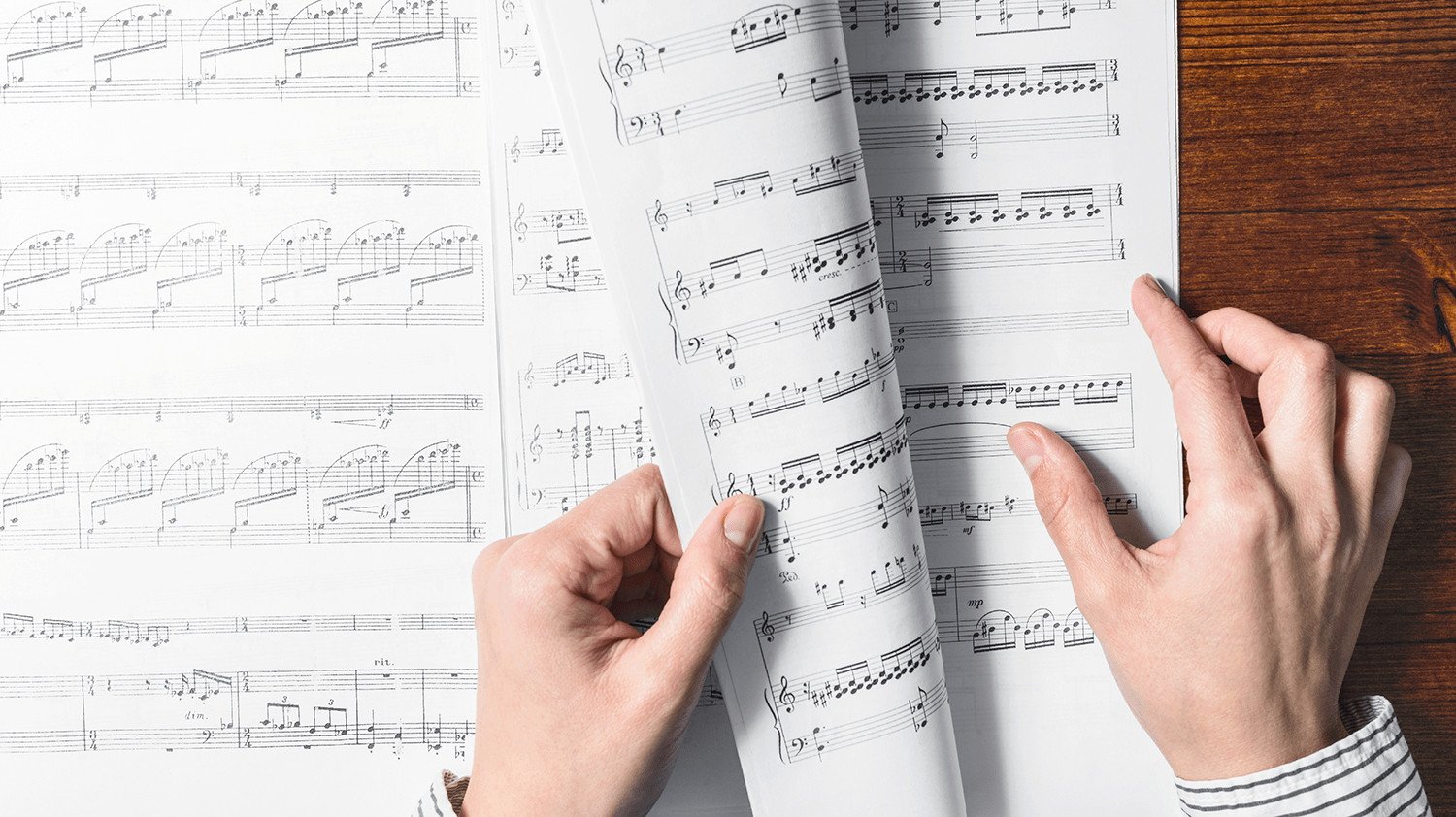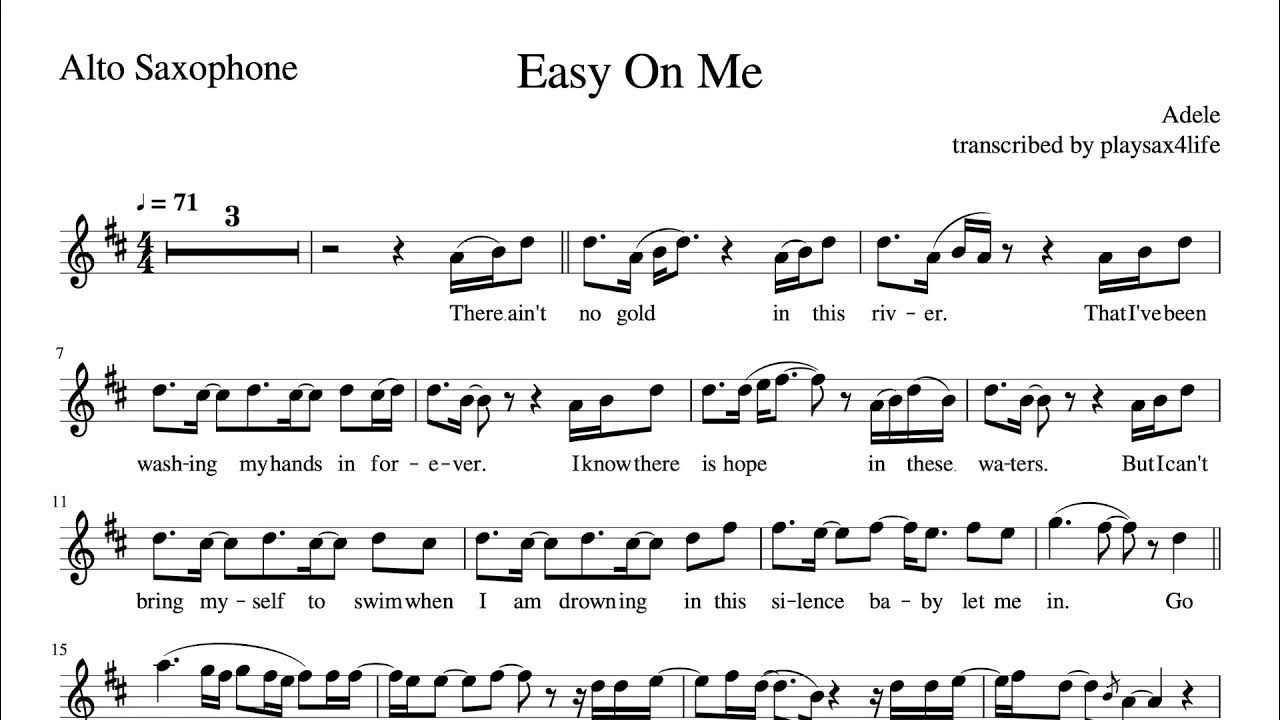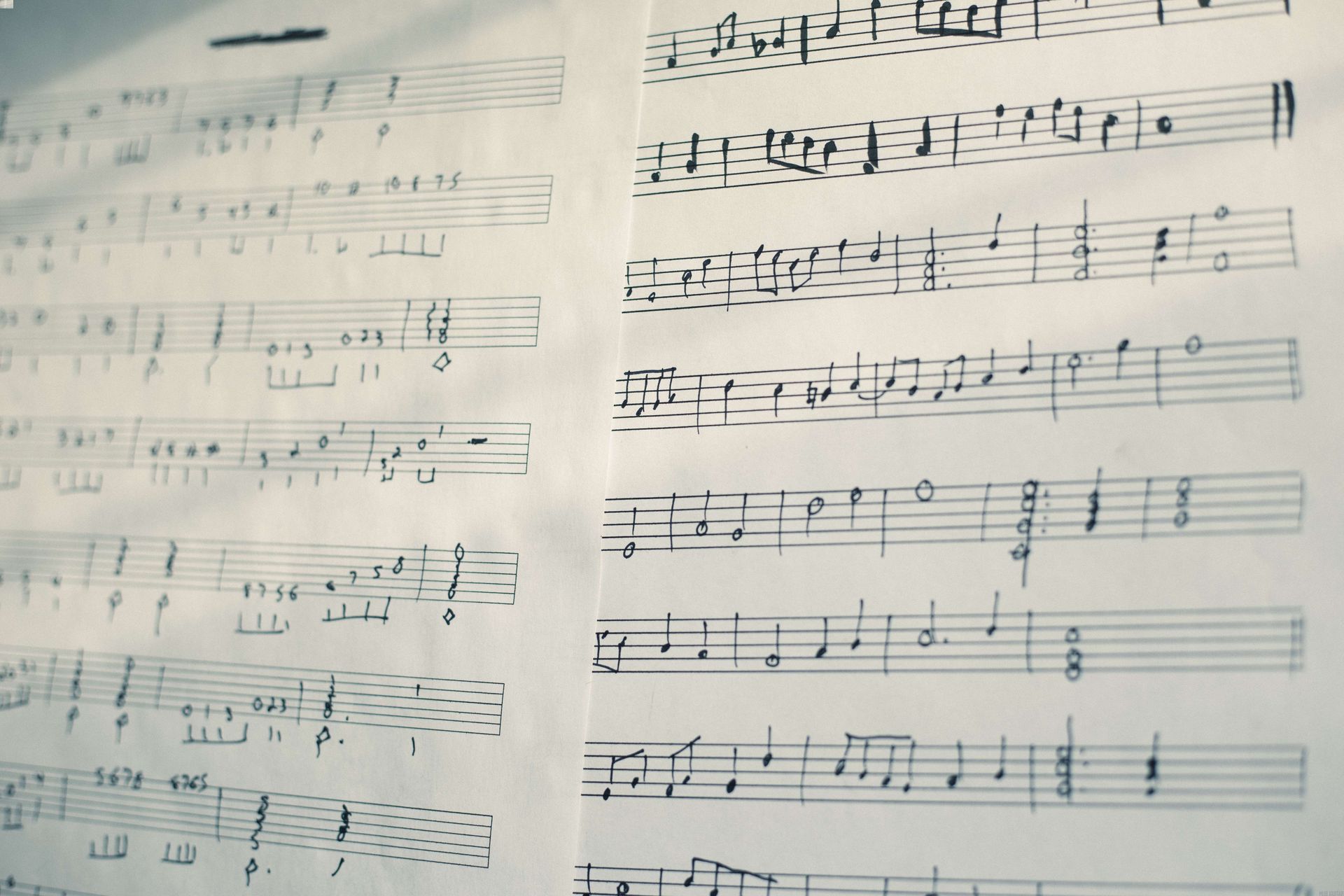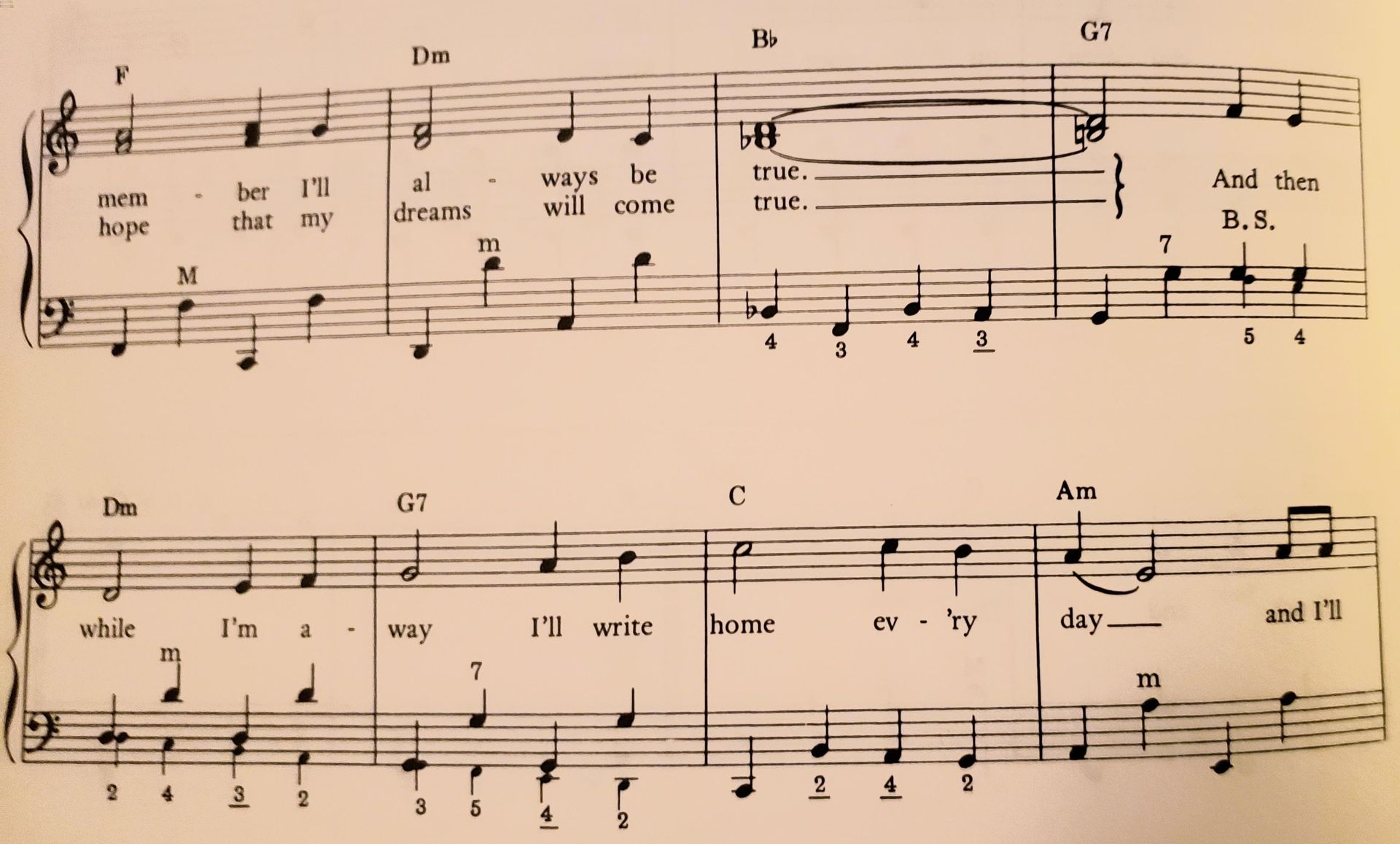

Classical
How To Read Classical Music Titles
Modified: January 22, 2024
Learn how to read classical music titles and unlock the secrets of this timeless genre. Discover the essentials of classical music notation and interpretation.
(Many of the links in this article redirect to a specific reviewed product. Your purchase of these products through affiliate links helps to generate commission for AudioLover.com, at no extra cost. Learn more)
Table of Contents
Introduction
Classical music has a rich history spanning centuries, and its titles can sometimes be daunting and confusing to those unfamiliar with the genre. Whether you’re a beginner exploring classical music for the first time or a seasoned enthusiast looking to deepen your understanding, decoding the titles of classical music compositions is essential to fully appreciate and engage with this timeless art form.
In this article, we will take a closer look at classical music titles, breaking down their various components and explaining their significance. By understanding the elements that make up a classical music title, you’ll be able to decipher the composer’s intent and gain deeper insights into the composition itself.
From the composer’s name to the composition or work title and additional descriptive terms, each aspect of the classical music title plays a crucial role in conveying the essence of the piece. We’ll explore how these components come together to create a comprehensive title that provides invaluable information for performers, listeners, and researchers.
Whether you’re attending a concert, delving into a recording, or studying music history, understanding classical music titles will enhance your appreciation and enjoyment of the genre. So, let’s dive in and unravel the mysteries behind these captivating titles.
Understanding Classical Music Titles
Classical music titles serve as a gateway to understanding the intent and context of a composition. They provide valuable insights into the composer’s inspiration, the structure of the piece, and even the emotions it seeks to evoke. To fully appreciate and interpret classical music, it is important to grasp the meaning behind these titles.
One key aspect of understanding classical music titles is recognizing that they are not arbitrary or random. Composers often put careful thought into naming their works, drawing from various sources of inspiration. This can include personal experiences, historical events, mythology, literature, or simply the emotions they wish to convey.
Another essential element of classical music titles is their connection to the composition’s structure and form. Many titles provide hints about the organization of the music, whether it be a symphony, sonata, concerto, or even an opera. Understanding these form-based titles can give listeners a framework to follow as they explore the piece.
In addition to understanding the historical and structural aspects, it is also important to consider the cultural and linguistic context surrounding classical music titles. Titles may be in different languages, such as Italian, German, French, or Latin, reflecting the origins and influences of the composers. Familiarizing yourself with these languages and their musical terminology can greatly enhance your comprehension of the titles.
It is worth mentioning that while classical music titles provide valuable insights, they do not limit the listener’s interpretation or emotional response. Music is a universal language, and each listener is free to form their own personal connections and experiences with a composition, regardless of its title.
By delving into the understanding of classical music titles, you open up a world of exploration and appreciation for the compositions. These titles serve as a bridge between the composer, the performer, and the listener, enriching the overall musical experience.
Components of Classical Music Titles
Classical music titles can consist of several components that provide important information about the composition. Understanding these components allows us to uncover the composer’s intentions and gain insights into the style, structure, and context of the piece. Let’s explore the main elements that make up classical music titles:
- Composer’s Name: The first component of a classical music title is usually the name of the composer. This identifies the individual who wrote the composition and helps establish their unique style and contribution to the classical music canon.
- Composition or Work Title: The composition or work title is the main identifier of the piece. It can be a descriptive name, such as “Symphony No. 5” or “Piano Concerto in A Minor,” or it may have a more poetic or evocative title, like Beethoven’s “Moonlight Sonata” or Debussy’s “Clair de Lune.”
- Opus Number (if applicable): Many classical music titles include an opus number, which indicates the order in which the composer wrote the piece. Opus numbers are particularly common in the works of composers from the Classical and Romantic periods. For example, Mozart’s Symphony No. 40 is identified by its opus number, K. 550.
- Key (if applicable): The key indicates the tonal center of the composition and plays an important role in understanding the harmonic structure and emotional character of the music. Key signatures such as A minor, C major, or F-sharp major are often included in classical music titles.
- Musical Form or Genre: Titles often include references to the musical form or genre of the composition. This can provide insights into the overall structure and style of the piece, whether it is a symphony, sonata, concerto, or an opera.
- Additional Descriptive Terms: Beyond the main components, classical music titles may include additional descriptive terms that offer further insights into the nature of the composition. These terms can convey emotions, moods, or specific musical techniques used in the piece. Examples can include terms like “passionate,” “joyful,” “serenade,” “scherzo,” or “nocturne.”
It’s important to note that not all classical music titles include every component. Some compositions may have simpler titles, while others may combine multiple elements to provide a more detailed description. By understanding these different components of classical music titles, we can approach the music with a deeper appreciation for the composer’s intent and the overall artistic expression.
Composers’ Name
The composer’s name is a fundamental component of a classical music title. It serves as a crucial identifier, allowing us to attribute the composition to a specific individual and explore their unique musical style and contributions. Understanding the significance of the composer’s name allows us to appreciate the context and historical significance of the composition.
Classical music is a vast genre, spanning different eras and cultures. Each composer brings their own artistic vision, personal experiences, and musical influences to their compositions. By knowing the composer’s name, we can delve into their body of work and develop a deeper connection with their music.
For instance, the mention of iconic composers like Ludwig van Beethoven, Wolfgang Amadeus Mozart, or Johann Sebastian Bach immediately invokes a sense of reverence and recognition. These composers have left an indelible mark on classical music and have shaped the course of musical history.
Additionally, knowing the composer’s name can also provide insights into the cultural and historical context of the composition. For example, mentioning composers like Tchaikovsky or Brahms instantly highlights their Russian or German heritage, respectively, and allows us to explore the musical traditions and influences that shaped their work.
Furthermore, understanding the composer’s name aids in tracing their artistic development and evolution over time. We can observe changes in their style, experimentation with different genres and forms, and the progressive nature of their compositions. It allows us to appreciate the growth and artistic maturation of the composer throughout their career.
Moreover, recognizing the composer’s name helps us distinguish between different composers with similar titles or works. For example, there are many pieces titled “Symphony No. 5” but knowing the composer’s name allows us to differentiate between Beethoven’s iconic piece and other works with the same title by composers like Mahler or Shostakovich.
Ultimately, the composer’s name is the foundation upon which the appreciation and exploration of classical music are built. It provides a starting point for our journey into their world of artistic expression, allowing us to discover the rich tapestry of compositions they have left behind.
So the next time you come across a classical music title, take a moment to acknowledge and appreciate the composer behind it. Their name holds a wealth of meaning and history, enriching our understanding and enjoyment of their timeless melodies.
Composition or Work Title
The composition or work title is a pivotal component within classical music titles. It serves as the primary identifier of the piece, providing valuable information about its content and often capturing the essence or theme of the composition. Understanding the significance of the composition or work title allows us to delve deeper into the intentions and artistic expression of the composer.
Classical music titles can take various forms, ranging from descriptive to evocative or even abstract. Some titles may provide straightforward information about the structure or genre of the composition, while others may offer poetic or enigmatic insights into the emotional or thematic content.
Descriptive titles are often straightforward and informative, providing a concise summary of the composition’s structure or form. For example, titles like “Symphony No. 5,” “Piano Concerto in A Minor,” or “String Quartet” immediately convey the main genre or musical form of the piece. These titles provide a starting point for understanding the overall structure and expectations of the composition.
On the other hand, composers may choose to give their compositions more poetic or evocative titles. These titles can offer glimpses into the emotional or thematic content of the music, leaving room for interpretation and personal connection. Examples of such titles include Beethoven’s “Moonlight Sonata,” Debussy’s “Prelude to the Afternoon of a Faun,” or Mussorgsky’s “Pictures at an Exhibition.” These titles invite listeners to explore the narrative or imagery that the composer intended to evoke.
It is important to note that composers may draw inspiration from various sources when choosing their composition or work title. They may be influenced by personal experiences, literature, mythology, historical events, or even abstract concepts. By understanding the significance behind the title, we can gain insights into the composer’s thought process and the intended message or atmosphere of the composition.
Furthermore, the composition or work title can shape our expectations and guide our listening experience. It can prepare us for the mood, emotions, or musical ideas that will be explored throughout the piece. For example, a title like “Funeral March” suggests a mournful and somber tone, while a title like “Spring Sonata” evokes a sense of freshness and renewal.
Ultimately, the composition or work title serves as a gateway to understanding the essence of the piece. It provides a glimpse into the composer’s intentions, allowing us to approach the music with a deeper appreciation for its content, structure, and emotional impact. So, the next time you encounter a classical music title, take a moment to reflect on its significance and allow it to guide your exploration of the composer’s musical masterpiece.
Opus Number (if applicable)
In the world of classical music, the opus number is a numerical designation used to identify the order in which a composer wrote their compositions. It serves as a valuable tool for cataloging and organizing the vast repertoire of classical music, particularly during the Classical and Romantic periods.
The use of opus numbers began in the late 18th century and became more prevalent during the 19th century. Composers, such as Ludwig van Beethoven, Franz Schubert, and Johannes Brahms, adopted this numbering system to establish a comprehensive record of their works and to aid in their publication.
Opus numbers typically appear alongside the composition’s title and act as a chronological reference point within a composer’s oeuvre. The number itself does not hold any inherent musical meaning, but it serves as a useful tool for scholars, performers, and enthusiasts to track and study the development of a composer’s style and repertoire.
Opus numbers are assigned in ascending order as composers write and publish their compositions. For example, Beethoven’s well-known Symphony No. 5 has the opus number 67, indicating that it was the 67th composition he published. Similarly, Mozart’s famous Symphony No. 40 in G minor, K. 550, showcases his unique opus numbering system with the letter “K” and a number assigned by Ludwig Köchel.
While opus numbers can provide a logical and chronological framework for studying a composer’s works, it is worth noting that not all composers used opus numbers consistently or at all. Some composers, like Johann Sebastian Bach, Antonio Vivaldi, or Claude Debussy, did not assign opus numbers to their compositions. In such cases, scholars and musicologists often use alternative cataloging systems or refer to the compositions by their alternate names or catalog numbers.
Understanding the opus number of a composition adds an additional layer of historical context to the work. Observing the order in which a composer wrote their compositions can reveal their artistic growth, experimentation with different forms and styles, and the influence of external factors on their creative output.
Overall, opus numbers provide a valuable tool for navigating the extensive catalog of classical music. They aid in the categorization, identification, and organization of compositions, allowing us to place a composition within the broader context of a composer’s body of work. Whether it’s exploring Beethoven’s symphonies or Schubert’s lieder, opus numbers offer a roadmap for studying and appreciating the rich tapestry of classical music.
Key (if applicable)
The key or tonality of a composition is an essential component within classical music titles. It represents the tonal center around which the composition revolves and provides valuable insights into its harmonic structure and emotional character.
In classical music, each key has its own distinctive characteristics and mood. Composers intentionally choose a specific key to convey the desired atmosphere and emotions within their compositions. By indicating the key in the title, listeners gain a deeper understanding of the tonal framework in which the piece is composed.
Keys are typically identified by the use of key signatures, which are collections of sharps or flats placed at the beginning of a musical staff to indicate the tonal center. For example, the key of A minor has no sharps or flats in its key signature, while the key of D major has two sharps.
The choice of key can have a significant impact on the overall character of a composition. Major keys often evoke a sense of brightness, joy, or triumph, while minor keys tend to convey somberness, melancholy, or introspection. For instance, a composition titled “Piano Sonata in C Major” may suggest a lively and uplifting quality, while a composition titled “Adagio in E Minor” might invoke a more introspective and melancholic atmosphere.
Additionally, the key plays a vital role in determining the harmonic progressions and relationships between chords within a composition. Composers use the unique tonal qualities of each key to craft melodic and harmonic sequences that create tension, resolution, and structural coherence.
Understanding the key of a composition also facilitates the exploration of related musical concepts, such as modulation. Modulation occurs when a composition transitions to a different key, altering the mood and harmonic landscape. By identifying key changes within a piece, listeners can follow the intricate musical journey that the composer has crafted.
However, it’s important to note that not all classical music titles include the key. Some compositions may have titles that focus solely on the structure, form, or descriptive aspects without referencing a specific key. In such cases, the key can be determined through the analysis of the composition itself.
By recognizing the key mentioned in a classical music title, we gain valuable insights into the composer’s tonal choices and the emotional landscape of the composition. It gives us a deeper appreciation of the interplay between melody, harmony, and key relationships, enriching our listening experience and allowing us to connect with the music on a deeper level.
Musical Form or Genre
The mention of the musical form or genre in a classical music title provides valuable information about the overall structure, style, and expectations of a composition. It serves as a guidepost, offering insights into the organization and approach that the composer has taken in shaping their work.
Classical music encompasses a wide range of forms and genres, each with its own unique characteristics and conventions. Common musical forms include symphonies, sonatas, concertos, operas, chamber music, and choral works, among others. Understanding the specific form or genre mentioned in the title gives listeners a framework to follow and allows for a deeper appreciation of the composition.
Form refers to the organization and arrangement of musical sections within a composition. Different forms have established structures and patterns that composers utilize to create coherence and unity. For example, a sonata typically consists of three or four movements, each with distinct structures and moods, while a symphony often follows a four-movement structure with an emphasis on orchestral compositions.
Genres, on the other hand, refer to broader categories or styles of music that share common characteristics and traditions. For instance, an opera combines music, drama, and stagecraft, incorporating solo and ensemble performances along with a narrative storyline. Chamber music, on the other hand, is a genre characterized by small ensembles typically performed in intimate settings.
By understanding the musical form or genre mentioned in the title, listeners can anticipate the general structure, instrumentation, and stylistic elements that will be present in the composition. It allows us to engage with the music in a more informed and contextualized manner, recognizing the specific conventions and expectations associated with that particular form or genre.
Moreover, the choice of form or genre in the title provides valuable historical and cultural context. Different time periods and regions have favored specific forms or genres, and composers often drew inspiration from the existing musical traditions of their time. By recognizing the form or genre, we can trace the development and evolution of musical styles throughout history.
It’s worth noting that composers often innovated within established forms or genres, pushing boundaries and creating unique compositions that defy categorization. The mention of a specific form or genre in the title does not limit the creativity or artistic expression of the composer but rather offers a starting point for exploration and appreciation.
Ultimately, appreciating the musical form or genre mentioned in a classical music title deepens our understanding of the composition. It allows us to approach the music with a heightened sense of context, recognizing the artistic choices made by the composer and immersing ourselves in the rich traditions and conventions of classical music.
Additional Descriptive Terms
In addition to the composer’s name, composition or work title, opus number, key (if applicable), and the mention of musical form or genre, classical music titles may include additional descriptive terms. These terms serve to provide further insights into the nature, character, and style of the composition, allowing listeners to anticipate and appreciate specific elements within the music.
These descriptive terms can encompass a wide range of attributes and qualities, such as emotions, moods, playing techniques, or musical forms. They serve as expressive indicators that reflect the composer’s intent and provide guidance for both performers and listeners.
Emotional terms, for example, give us a glimpse into the intended mood or emotional landscape of the composition. Titles may include words like “passionate,” “serene,” “triumphant,” “lamenting,” or “joyful,” among many others. These terms invite us to emotionally connect with the music and allow us to anticipate the range of emotions that will be conveyed throughout the composition.
Descriptive terms can also provide insights into the specific techniques or playing styles employed in the piece. For example, titles may include terms like “staccato,” “legato,” “adagio,” “allegro,” or “pizzicato,” indicating the desired manner in which the music should be performed. These terms guide both performers and listeners in understanding the intended articulation, dynamics, and overall expressive qualities of the composition.
Furthermore, composers may use descriptive terms to convey a particular musical form or stylistic approach within the composition. Terms like “scherzo,” “rondo,” “fugue,” or “sonata” give us an indication of the specific structural elements or formal techniques that will be utilized. Recognizing these terms helps us follow the intricate musical patterns and appreciate the intellectual and structural craftsmanship involved.
It is important to note that these additional descriptive terms are not always present in every classical music title. Some compositions may have simpler titles that focus solely on the composer’s name, work title, and maybe the key or opus number. However, when present, these terms offer valuable insights into the expressive intent and stylistic nuances within the composition.
By understanding and recognizing the additional descriptive terms in classical music titles, listeners gain a deeper appreciation for the composer’s intentions and can actively engage with the music on a more nuanced level. These terms act as guideposts, hinting at the emotional, technical, and structural elements that await us within the composition, enhancing our overall connection with the music.
Subtitles or Movements (if applicable)
In many classical music compositions, especially larger works such as symphonies, concertos, or sonatas, the titles may incorporate subtitles or movements. These subtitles or movements provide insight into the internal structure and organization of the composition, revealing how it is divided into distinct sections or parts.
Subtitles are additional titles that accompany the main composition or work title, often indicating specific sections within the piece. For example, a symphony may have subtitles such as “Adagio,” “Scherzo,” “Andante,” or “Finale,” signifying the different movements or sections that make up the composition. Subtitles can also reflect the character or atmosphere of the respective movement, giving listeners an idea of what to expect as they progress through the piece.
Each movement within a composition is a self-contained section with its own unique musical ideas and structure. Movements are typically numbered, such as “Movement I,” “Movement II,” etc., and can have individual titles that provide further descriptive context. These individual titles may shed light on the content or character of the movement, highlighting specific musical themes or techniques employed.
Understanding the subtitles or movements within a classical composition enables listeners to follow the structural development of the music. It allows us to recognize distinct shifts in mood, tempo, or musical ideas as the piece progresses. Movements often have contrasting tempos and styles, providing a dynamic journey and a sense of narrative within the overall composition.
Movements also offer opportunities for performers to demonstrate their technical and expressive abilities. Different movements may require different playing techniques, varying levels of intensity, or contrasting emotional expressions. Recognizing the movements within a composition enhances our appreciation for the skill and artistry required to interpret the piece.
It’s important to note that not all classical compositions have subtitles or movements. Smaller pieces or certain genres, like preludes or dances, may not be structured into distinct movements. However, when present, these subtitles or movements provide valuable organizational clues, allowing listeners to engage with the composition on a deeper level and follow its structural journey.
By recognizing the subtitles or movements within a classical music title, listeners can anticipate the varying themes, moods, and musical ideas that will unfold throughout the composition. It enhances our understanding of the composer’s intended structure and offers a framework for experiencing the piece as a cohesive and multi-dimensional work of art.
Conclusion
Deciphering classical music titles opens up a world of understanding, appreciation, and deeper connection with the rich heritage of this timeless genre. By unraveling the various components of classical music titles, from the composer’s name to the composition or work title, opus number, key (if applicable), musical form or genre, additional descriptive terms, and subtitles or movements (if applicable), we gain valuable insights into the intentions, structure, and context of the composition.
Understanding classical music titles allows us to delve into the composer’s artistic vision, exploring their unique style and creative choices. It presents us with an opportunity to uncover the historical, cultural, and emotional contexts from which the music emerged.
Moreover, by grasping the structure and form indicated in the titles, we can follow the musical narrative, anticipate shifts in mood and expression, and appreciate the craftsmanship of the composition. Recognizing additional descriptive terms in the titles guides our interpretation, deepening our emotional engagement and connection with the music.
Classical music titles bridge the gap between the composer, the performer, and the listener, acting as a roadmap to navigate the vast and diverse landscape of classical compositions. They inform performers about the intended stylistic and expressive elements, while offering listeners a framework for exploring and appreciating the nuances of the music.
Ultimately, understanding classical music titles enhances the overall listening experience. It enables us to approach the music with a deeper sense of context and knowledge, leading to a more profound connection and appreciation for the artistry and creativity that went into its creation.
So, the next time you encounter a classical music title, take a moment to reflect on its components and significance. Dive into the world of the composer, explore the structure and form, immerse yourself in the emotions and themes, and allow the rich tapestry of classical music to weave its magic.











